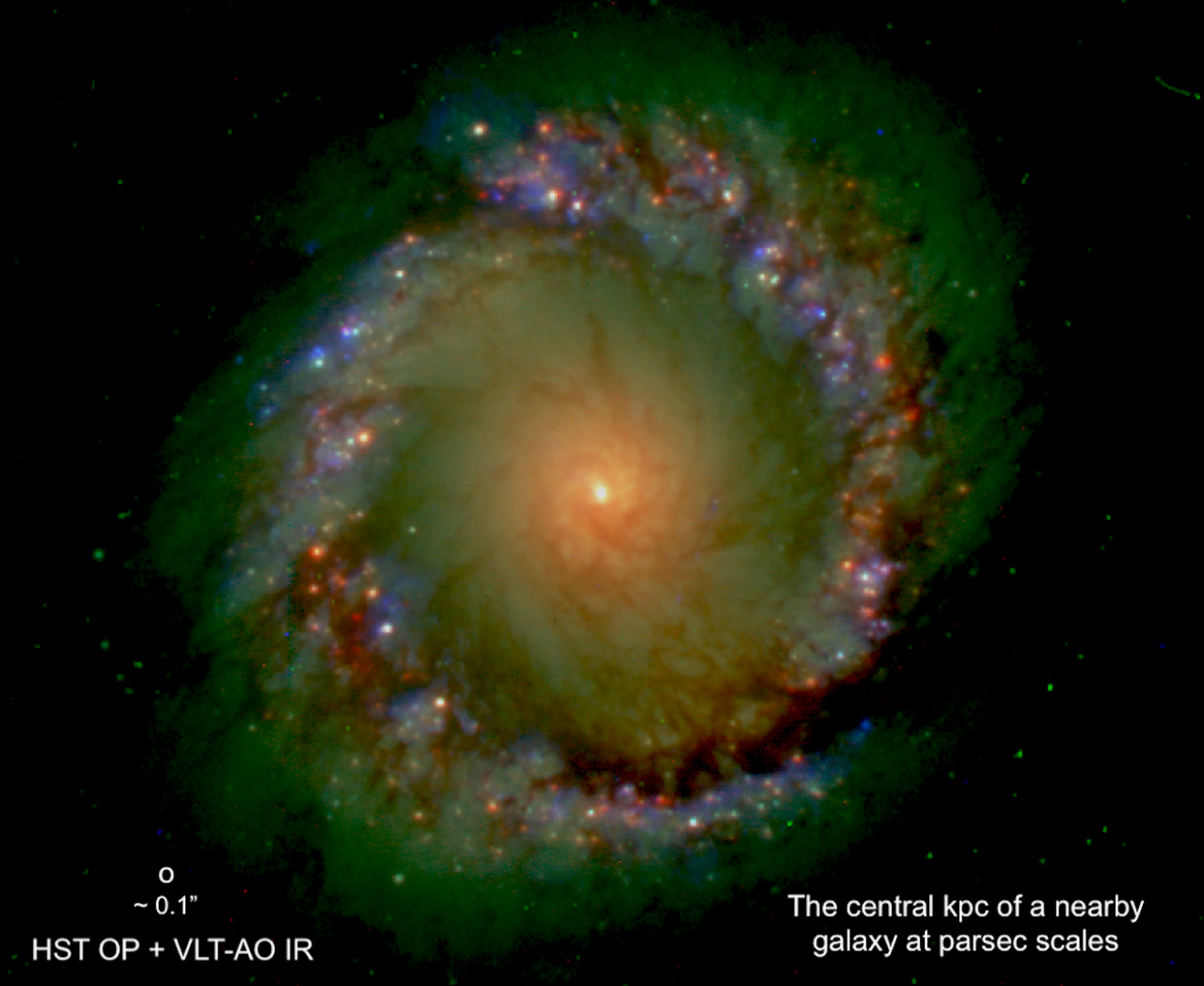Subvenciones relacionadas:
General
Proyecto enfocado al estudio en el IR del núcleo de las galaxias más cercanas con resoluciones espaciales en el rango de 1 a 10 pc. Estas resoluciones espaciales, accesibles con los grandes telescopios de tierra usando técnicas frontera de observación, son por primera vez comparables a las que se obtienen rutinariamente con HST en el óptico y VLBI en radio. Los objetivos de este proyecto son:
- Desarrollar un grupo leader en el IAC especializado en técnicas de alta resolución espacial en el IR, especificamente en adaptive optics, laser-guide star, speckle and optical interferometry. Para ello, este equipo está involucrado en el desarrollo del primer instrumento de óptica adaptativa para GTC, FRIDA http://www.iac.es/proyecto/frida/, en la definición de programas estratégicos de observación con láser en GTC con GTCAO y en la definición y desarrollo de instrumentación de óptica adaptativa futura para VLT, ERIS http://www.eso.org/~mschoell/ERIS/
- Utilizar estas técnicas para el estudio de centros de galaxias, y sus manifestaciones energéticas, con resoluciones espaciales por debajo de 100mas. Para ello, el equipo desarrolla los siguientes proyectos:
a) Proyecto PARSEC: "The central PARSEC of galaxies http://www.iac.es/project/parsec/main/index.php. Estudio del centro de galaxias más cercanas y brillantes utilizando datos de resolución espacial comparable: radio con VLA, IR con óptica adaptativa e interferometría óptica, y óptico con HST
b) Proyecto PAIS: Particle Accelerators In Space http://www.iac.es/proyecto/jets-and-hotspots-in-radiogalaxies/main/inde…. Estudio de jets y hot-spots en galaxias. El programa explora los procesos físicos que dan lugar a emisión óptica en jets y hot-spots, usando datos con alta resolución espacial procedentes de VLA, HST y VLT.
Miembros
Resultados
- El resultado del Master Tesis de estudiante Elena López se publica en MNRAS, López & Prieto, 2018. IAC Press Release con eco en más de 23 medios de comunicación
- Proyecto PARSEC produce tres resultados de impacto en 2018: dos letters in MNRAS y un artículo en Nature (todos liderados por miembros de PARSEC)
- PARSEC permanece el único estudio de centros de galaxias a nivel internacional basado en el uso simultaneo de multi-longitud de onda, variabilidad y resoluciones de parsecs
- En competición abierta, se gana financiación completa del Gobierno de Brasil para cubrir 1 contrato, 1 ano, en el IAC, para el miembro de PARSEC Dr. Rodríguez-Ardila, para



